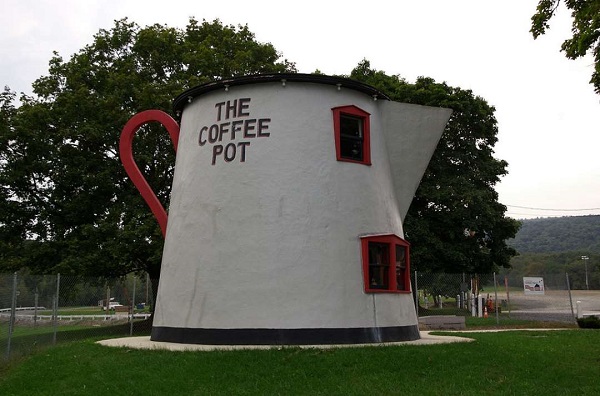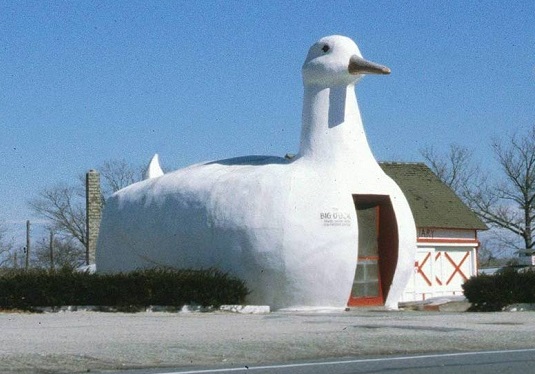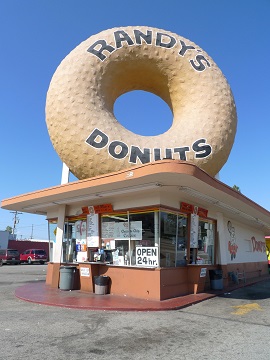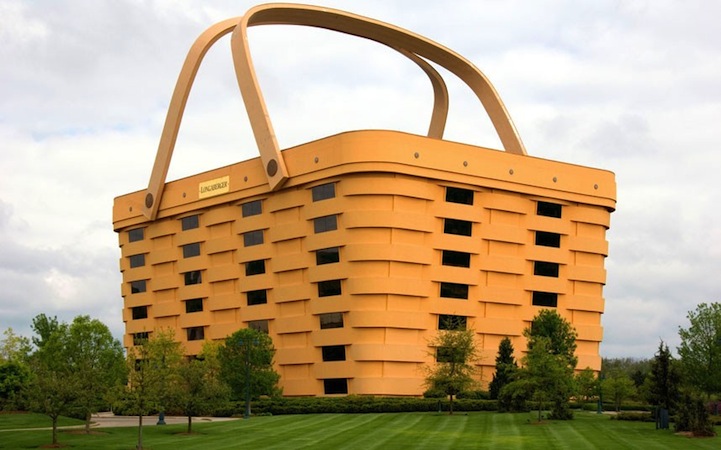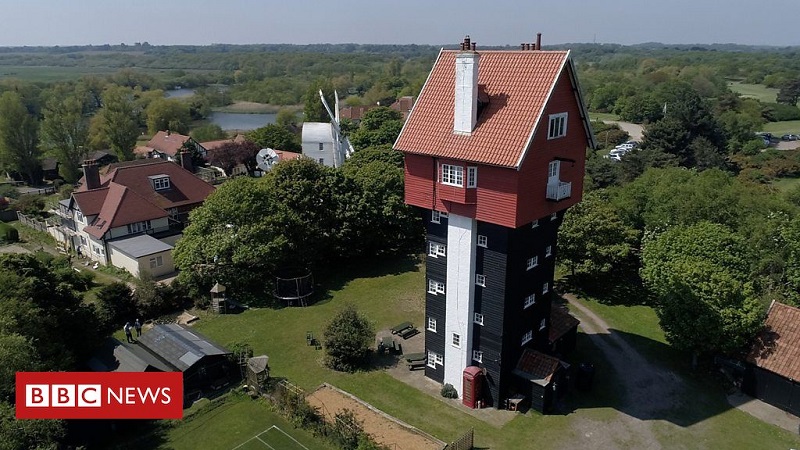Mimetic architecture
Mimetic architecture, also known as ‘novelty’ or ‘programmatic’ architecture, is a style of building design popularised in the United States in the first-half of the 20th century. It is characterised by unusual building designs that mimic the purpose or function of the building, or the product it is associated with.
Mimetic architecture was particularly popular between the 1920s and 1950s, as cars became widespread and freeways were built across America. Some roadside architecture started to be seen as a means for advertising to passing cars. For example, a roadside restaurant might be designed in the shape of a giant hot dog, a coffee shop in the shape of a coffee pot, or a fruit stand in the shape of a piece of fruit.
While mimetic architecture fell from favour after the 1950s and many such buildings were redeveloped or demolished, their size and novelty means that many are now viewed as local landmarks to be preserved.
[edit] Famous examples include:
Kansas City Public Library, Kansas City
Randy’s Donuts, California
The Big Basket, Newark
Water towers and storage tanks are often disguised in inventive ways, such as the House in the Clouds in Thorpeness (below).
Mimetic architecture can also refer to the replication of famous landmarks. This is popular in China, Japan and particularly, the United States. Perhaps the place where this is most synonymous is Las Vegas where buildings have been constructed that mimic an Egyptian pyramid (Luxor Las Vegas), the New York skyline (New-New York Hotel and Casino), the Eiffel Tower (Paris Las Vegas), a cartoon-medieval castle (Excalibur), the Rialto bridge (Venetian), and Roman classical architecture (Caesar’s Palace).
[edit] See our unusual buildings gallery HERE.
[edit] Related articles on Designing Buildings
- American architecture and construction.
- Architectural styles.
- Art Moderne.
- Big Duck.
- Britain’s greatest maverick building.
- Constructivist architecture.
- Dancing House, Prague.
- Dunmore Pineapple.
- Fish Building, India.
- Gereja Ayam.
- Haines Shoe House.
- Historical versus Modern: Identity through imitation.
- Lotus Temple.
- Luxor Las Vegas
- Metabolism.
- Piano Building.
- Skeuomorphism.
- Teapot building.
- Teapot Dome Service Station.
- The Big Basket.
- The Kelpies.
- The Oculus.
- Unusual building design of the week.
Featured articles and news
RTPI leader to become new CIOB Chief Executive Officer
Dr Victoria Hills MRTPI, FICE to take over after Caroline Gumble’s departure.
Social and affordable housing, a long term plan for delivery
The “Delivering a Decade of Renewal for Social and Affordable Housing” strategy sets out future path.
A change to adoptive architecture
Effects of global weather warming on architectural detailing, material choice and human interaction.
The proposed publicly owned and backed subsidiary of Homes England, to facilitate new homes.
How big is the problem and what can we do to mitigate the effects?
Overheating guidance and tools for building designers
A number of cool guides to help with the heat.
The UK's Modern Industrial Strategy: A 10 year plan
Previous consultation criticism, current key elements and general support with some persisting reservations.
Building Safety Regulator reforms
New roles, new staff and a new fast track service pave the way for a single construction regulator.
Architectural Technologist CPDs and Communications
CIAT CPD… and how you can do it!
Cooling centres and cool spaces
Managing extreme heat in cities by directing the public to places for heat stress relief and water sources.
Winter gardens: A brief history and warm variations
Extending the season with glass in different forms and terms.
Restoring Great Yarmouth's Winter Gardens
Transforming one of the least sustainable constructions imaginable.
Construction Skills Mission Board launch sector drive
Newly formed government and industry collaboration set strategy for recruiting an additional 100,000 construction workers a year.
New Architects Code comes into effect in September 2025
ARB Architects Code of Conduct and Practice available with ongoing consultation regarding guidance.
Welsh Skills Body (Medr) launches ambitious plan
The new skills body brings together funding and regulation of tertiary education and research for the devolved nation.
Paul Gandy FCIOB announced as next CIOB President
Former Tilbury Douglas CEO takes helm.
UK Infrastructure: A 10 Year Strategy. In brief with reactions
With the National Infrastructure and Service Transformation Authority (NISTA).






